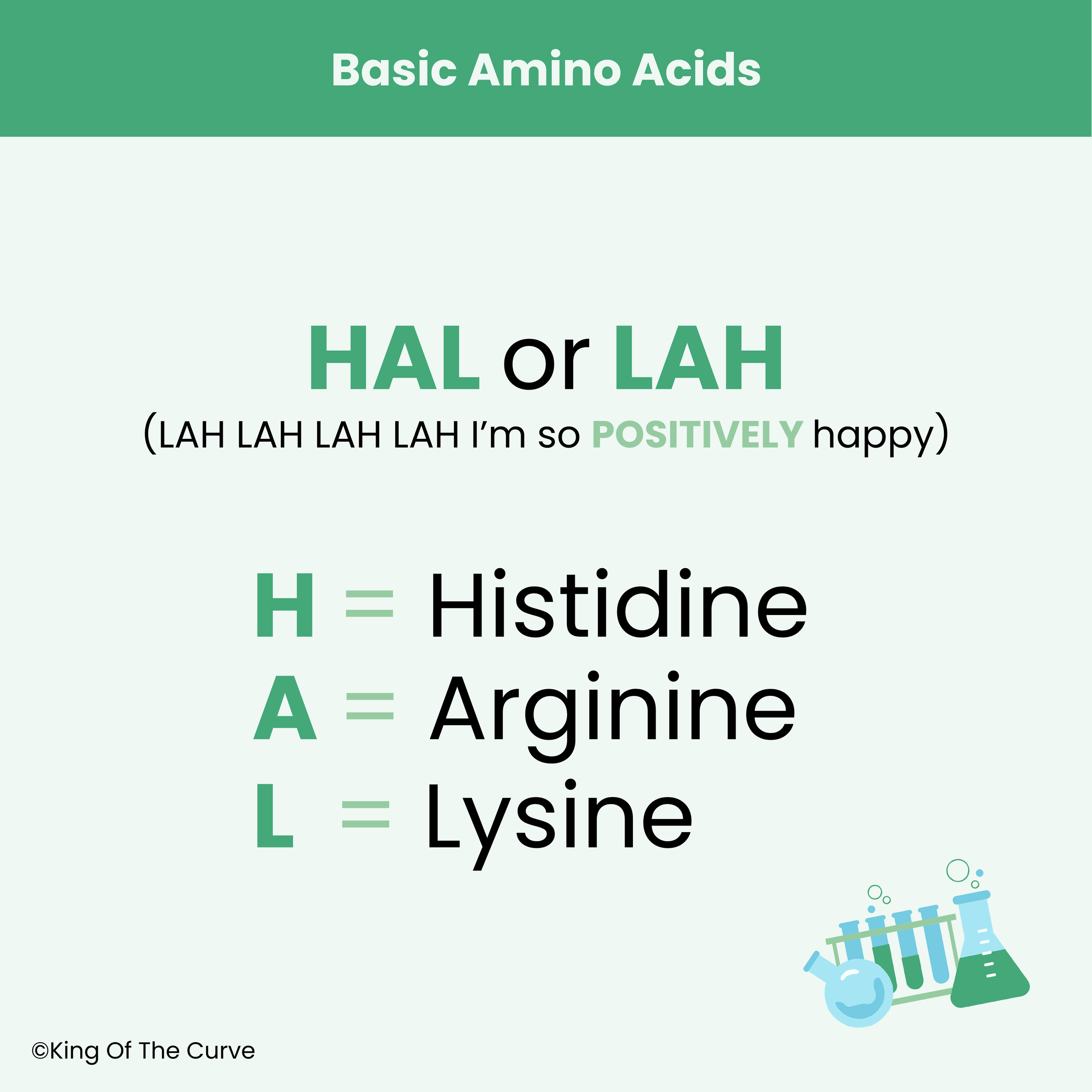Unlocking the Basics of Amino Acids: HAL or LAH Method
When preparing for exams like the MCAT, NCLEX, or any health-related test, it's essential to simplify complex topics for better retention. That's where mnemonics like HAL (or LAH) come into play! This clever mnemonic helps students recall the three basic amino acids: Histidine, Arginine, and Lysine. These amino acids are positively charged at physiological pH, making them "basic" in both name and chemistry.
What Are Basic Amino Acids?
Amino acids are the building blocks of proteins, and their classification is based on the properties of their side chains. The basic amino acids have positively charged side chains due to their amine groups, which contribute to their unique roles in:
Protein structure stabilization
pH buffering in biological systems
Enzyme active sites
The three basic amino acids can be remembered as HAL (Histidine, Arginine, Lysine), with an emphasis on their positive charge:
Histidine (H): Important in enzyme catalysis and pH regulation due to its imidazole group.
Arginine (A): Known for its guanidinium group, crucial in nitrogen metabolism and protein interactions.
Lysine (L): Essential for crosslinking in proteins and gene expression regulation.
Why Is HAL or LAH So “Positively Happy”?
The phrase "LAH LAH LAH, I'm so positively happy!" is an easy way to associate positive charge with these amino acids. When studying biochemistry or preparing for a medical exam, visual or quirky memory aids like this one make retrieval faster and stress-free.
Why HAL Matters in Medicine and Beyond
Understanding basic amino acids isn’t just about passing exams—it’s about building the foundation for your career. These molecules play a pivotal role in:
Drug interactions: Basic amino acids interact with acidic drug molecules, influencing efficacy and absorption.
Genetic research: Histidine’s buffering capacity is crucial in DNA-binding proteins.
Disease treatment: Arginine supplements are used in conditions like wound healing and immune deficiencies.
By mastering HAL, you’re not just memorizing facts—you’re preparing to make informed decisions in clinical settings.
Tips for Memorizing HAL (LAH) with KOTC
Practice with Quizzes: Reinforce the mnemonic by solving adaptive quizzes on KOTC.
Create Visual Flashcards: Use KOTC’s visual aids or make your own diagrams to see the connections.
Incorporate Daily Practice: Answer daily questions to solidify your understanding over time.
Engage with Peers: Join multiplayer sessions for collaborative learning and friendly competition.
KOTC’s Mission: Learning That Lasts
KOTC is more than an app—it's a movement. With over 100,000 downloads and recognition in Forbes 30 Under 30, we’ve transformed the way students approach exam prep. Here’s what sets us apart:
Long-term learning over short-term cramming
Effortless and rewarding results
Support for underrepresented individuals, who make up 35% of our users
Thanks to partnerships like the one with Kapor Capital, KOTC continues to innovate, helping students from diverse backgrounds achieve their dreams.
Conclusion
Mastering basic amino acids like HAL (Histidine, Arginine, Lysine) doesn’t have to be daunting. By integrating mnemonics, gamified learning, and adaptive tools like those offered by King of the Curve, you can turn challenging concepts into second nature.
Take charge of your medical journey today and make learning "positively" enjoyable with KOTC!
Frequently Asked Questions (FAQs)
-
Basic amino acids have positively charged side chains at physiological pH, making them "basic" in terms of chemical properties.
-
Histidine’s imidazole group has a pKa close to physiological pH, making it an excellent buffer in enzymatic reactions.
-
They stabilize protein structures, act as pH buffers, and participate in enzymatic catalysis.
-
Pair mnemonics with visual aids, repetition, and application in quizzes to maximize retention.
-
KOTC combines adaptive learning, gamification, and visuals to simplify complex subjects like amino acids, making study sessions more effective.


